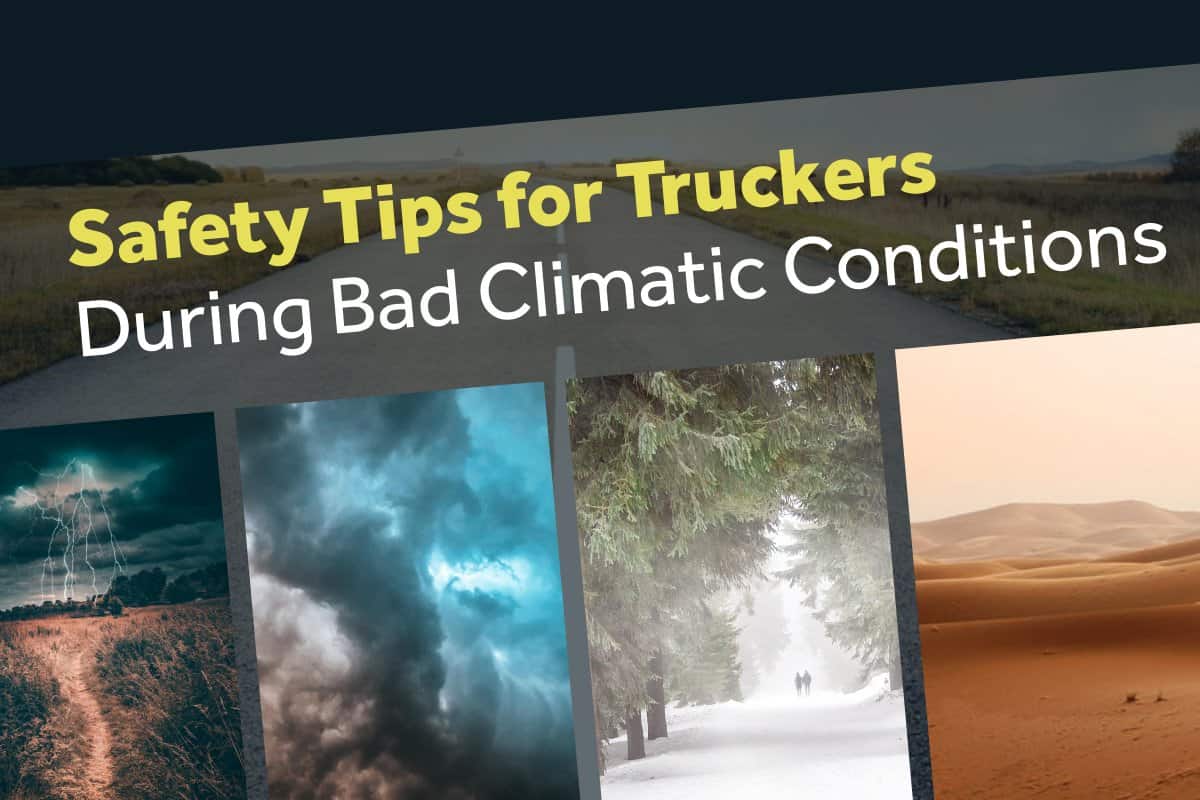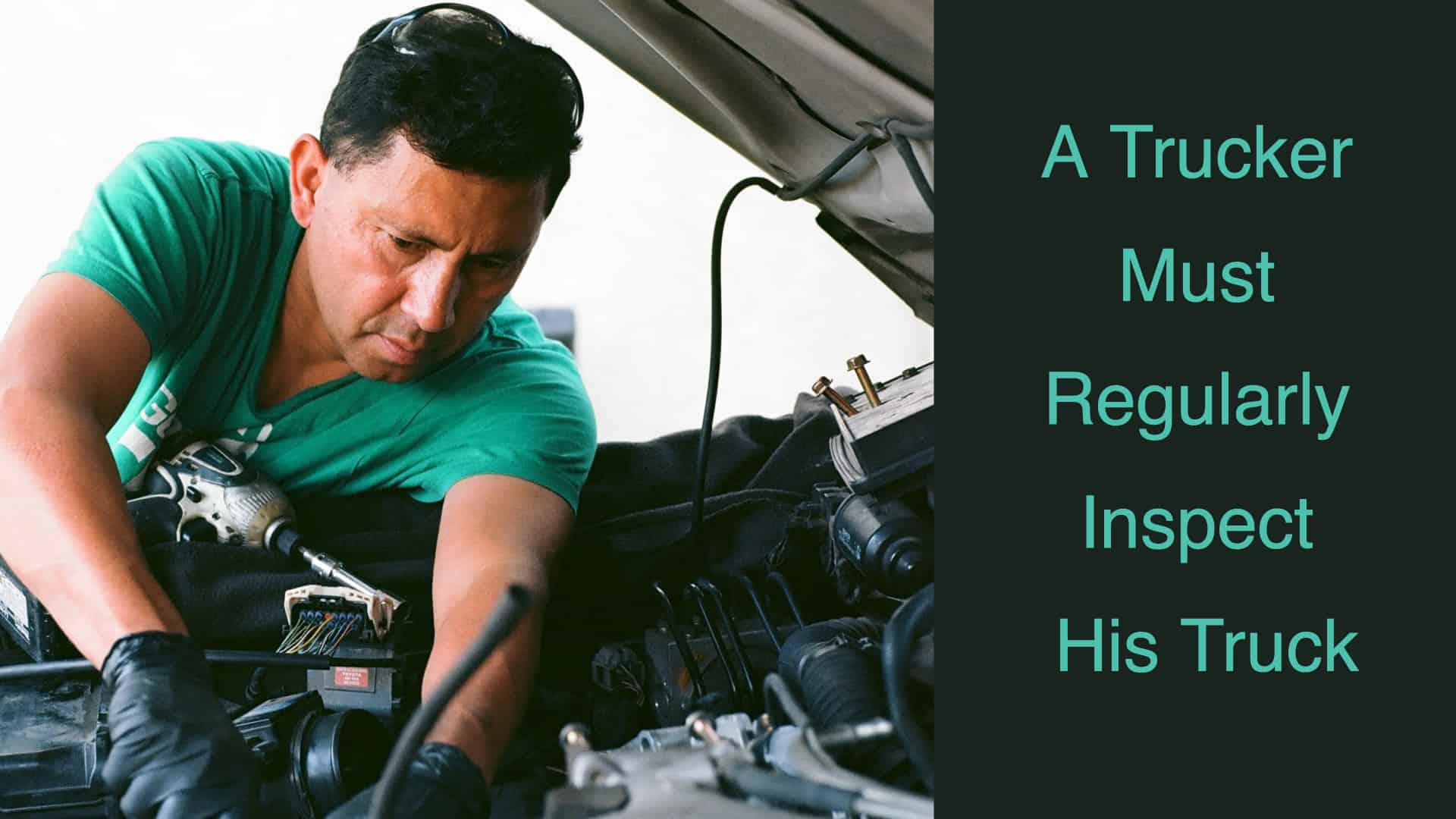Safety Tips For Truckers During Bad Climatic Conditions

The showers of rain, the severe hot weather, the chilly winter guides our actions. It plays a decisive role in the completion of our tasks. One schedules his/her job keeping several other things in mind, including the weather. The average weather conditions in an area affect several activities to a greater extent. At some stage, all drivers are tested by difficult climatic conditions. Adverse weather conditions include driving in rain, snow, hailstorm, thunderstorm, strong winds and extreme hot or cold weather. Unfortunately, many people think little about the alterations required in driving system.
With a 80,000 pound truck in control, a truck driver can never enjoy his ride when it’s pouring and the breeze is blasting. The best strategy for driving in unfavorable climate is to avoid it. But, if in any case, going out is vital or you get captured in terrible conditions once you’re already out, then you need to follow some safe driving tips.
Worsening weather conditions can present numerous challenges to the truckers and therefore they must have special skills to overcome such situations. It’s time for you to read further to know how to deal with adverse weather conditions.
TACKLE THE SNOW AND ICE
Driving a truck is never “simple,” yet this is particularly valid in frigid climate. To sharpen your abilities, ask somebody with winter driving knowledge to take you to an empty parking lot where you can work on driving, turning, and halting in the snow.
The best safety step during bad climatic conditions is to avoid driving. But, if in any case that you have to drive:
- Always try to prevent the fuel lines from solidifying.
- Clear snow totally up the whole truck (counting the rooftop), making sure to clear the taillights and headlights.
- Keep an eye on slow moving vehicles like snowplows and sand trucks, and do whatever it takes not to get excessively close. Additionally, endeavor to abstain from passing these vehicles.
- If you get along trouble, try not to leave the vehicle and call for help.
- Run the heater from time to time to keep yourself warm, but try to avoid carbon monoxide poisoning by making sure that your truck’s tailpipe isn’t blocked with snow or other such things.
- Drive slower than usual to make sure you have complete control over the vehicle.

Specialists and analysts in the U.S. discovered that 24% of all road accidents happen amidst adverse climatic conditions, including ice, snow, and rain. Unfavorable weather conditions and low visibility can force the truck driver to apply emergency brakes or take inappropriate stops.
RAIN, RAIN GO AWAY
Roads are messy. Engine motors sometimes dribble oils. Due to a lot of tires rolling on the roads, a ton of sleek and smooth substances develop on roads. That’s the reason why roads become smooth and slippery after drizzling and rain showers. The water spreads these oils to the surface, making the roads slippery and dangerous.
If you get captured in such circumstances and your truck begins to slip, don’t panic or hammer on the brakes. Keep a firm hold on the steering wheel, lift your foot off the accelerator, and let the vehicle drift (making a point not to turn the steering wheel) until the point that you feel your vehicle get footing once more.
Always keep yourself aware of thunderstorm warnings. If a thunderstorm starts while you’re driving and visibility is not up to the mark, wait for some time. Don’t take the risk of facing the thunder and lightning — stay in your truck for keeping yourself and your truck safe and secure.

Low Visibility In Thunderstorms Can Lead To Severe Road Accidents
STORMY WEATHER
During bad weather conditions, one needs to follow the given four techniques to prevent any further damage:
- Go through the weather reports on a daily basis, for being able to take the best possible decisions.
- Drive as per the defined speed limits, put on your seatbelt and get enough sleep. Obeying the traffic rules and regulations is a must.
- Vehicle maintenance is important for preventing any unwanted incidents.
- Examine the situations thoroughly, and take appropriate measures according to that.
SCORCHING HEAT
The days of summer are no joke, and whether you have a whole deal or a short-pull, it’s a smart thought for truckers to plan ahead and be prepared for the heat.

Here are only a couple of approaches to remain safe amid the hottest part of the summer:
Stay Hydrated: On a bustling day, it is really very common to overlook something basic like drinking enough water. Let’s assume you have twelve stops and you know there’s scarcely enough time in the workday to make them all. You may neglect to drink those couple of jugs of water in the route. During winters, no damage no foul. But, on a sweltering summer day with the perspiration dribbling, appropriate hydration is an absolute necessity.
Protect Your Eyes And Ensure Visibility: There are just too many photons on a open bright summer day. With so much light entering the eyes, the visibility gets too low. Also, its harmful for the human eyes. Sunglasses are extremely necessary when its bright and the sky is clear.
Sunscreen is Must: For short-pull drivers who are getting in and out of their trucks for the duration of the day, sunscreen is a need. Secure your skin with sunscreen. The sun’s beams can be unforgiving, so make sure to protect your whole body.
Be Careful About Your Rig’s Maintenance: As a responsible truck driver, it’s constantly vital to assess your tires and brakes all the time, regardless of the weather forecast. In any case, this turns out to be much more critical during extraordinary heat, which can prompt quicker disintegration of brakes and tires. Remain careful about your rig’s maintenance. Tires can get overheated and burst. Parts of damaged tires (sharks in a trucker’s lingo) are everywhere to be seen in the summer months.
“Beware of the sharks on the road”
Always Be Prepared: We’ve concentrated on heat until now, however along with that, summer also brings with it extreme tempests and tornados all through a significant part of the nation. Streets can end up smooth or overwhelmed. Visibility can drop down to zero. Winds can blast at unbelievable velocities. Never ignore the weather warnings. Always watch the climate report before you begin, recognize what’s coming and draw over when conditions get excessively perilous.
Your Fitness as A Driver Is A Must: A safe driver should endeavor to be physically fit, sound and prepared for the difficulties that extraordinary climate may toss at him. In antagonistic climatic conditions, it is significantly more essential to be alert and to utilize every one of your senses to recognize potential perils. The driver should have a clear vision to ensure safe driving. Besides this, he/she must avoid loud music on the radio and other such distractions and try to prevent driver fatigue by keeping the vehicle well ventilated.
Fitness of The Vehicle Also Matters: A Safe driver should be aware of the need to have a vehicle equipped with all the preventive measures to drive safely and to not succumb to bad climatic conditions. Here’s a suggestion for an entire inspection plan before a trip with keen focus on the following:
- Inspect and check all required materials, including tires, wiper blades, fluids and lights.
- Make sure that wiper blades are not worn out and are capable of clearing the windscreen correctly.
- Never forget to check the spare tire.
- Don’t forget to inspect the battery, antifreeze, windshield wiper fluid and headlights.
- Ensure that lights are tidy and maintained and number plates are clearly visible and legible.
- Headlamps, turn signals, and hazard signals are crucial in adverse weather driving conditions.
- Always try to be visible and it’s always a sensible choice to see in front of you when you’re driving, regardless of the weather outside your vehicle.
- Check that the mirrors are clear.
- While driving in hot weather, keep an eye on the warning lights.
- Make sure you have enough fuel for a delayed journey.

Be Prepared for The Unexpected Emergency: Once you are ensured about your own driving ability to drive in the bad weather, there are a few basic steps to make you ready for the drive:
- Listen and obey national and local radio/TV announcements and warnings
- Do not ever think about crossing at a river crossing where the road has been closed.
- Make sure you wear seatbelts at all times. Better click it for your own safety.
- Look out for signs indicating bad weather conditions.
- Usually it is good to avoid driving during adverse weather conditions, but if it is really necessary to travel, inform your employer, customer, family and friends about the time of your arrival and always carry a mobile phone with you to be in contact with your people.
- Make sure your mobile phone is charged.
The above mentioned steps, to be followed during specific weather conditions, include some general measures as well as some special tips. They will always prove to be beneficial, if followed carefully. So, it is very necessary to act judicially. All the preventive measures must be implemented at the right time, so as to deal with the bad climatic conditions and have a safe and pleasant experience while driving a truck.
Follow the safety tips and have a safe and secure drive!!
© 2008-2018. All Rights Reserved by Cunningham Trucking, Inc. & Westernston, Inc.
